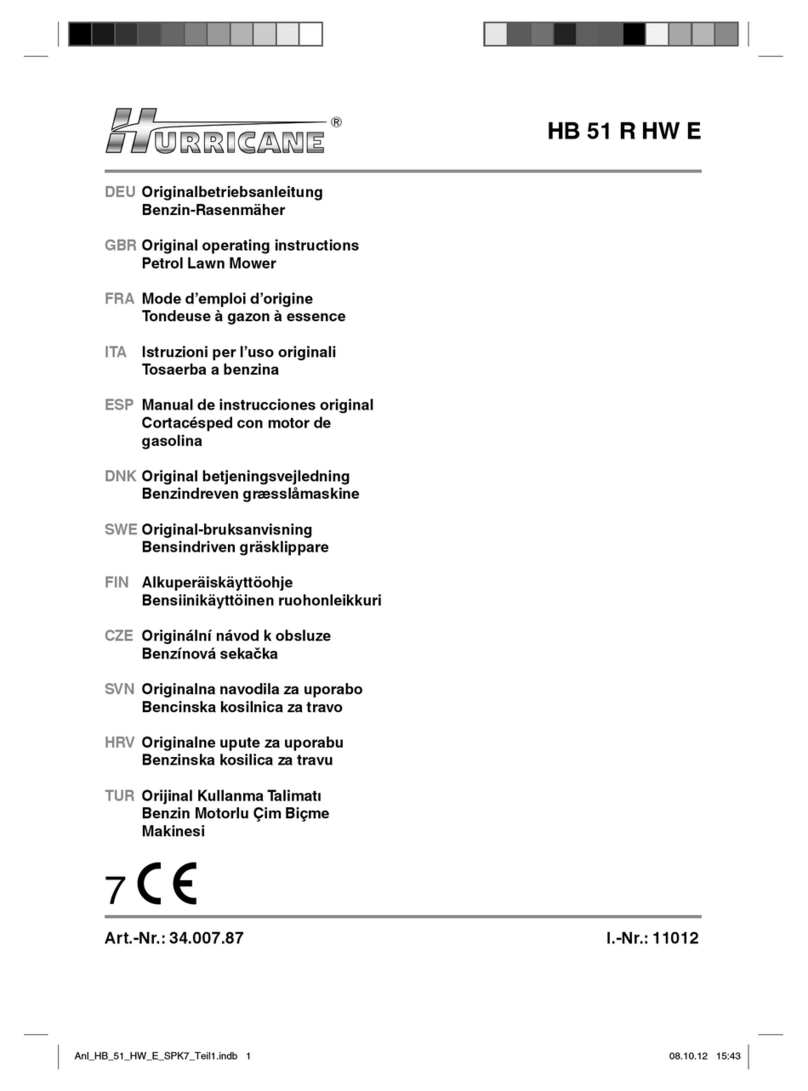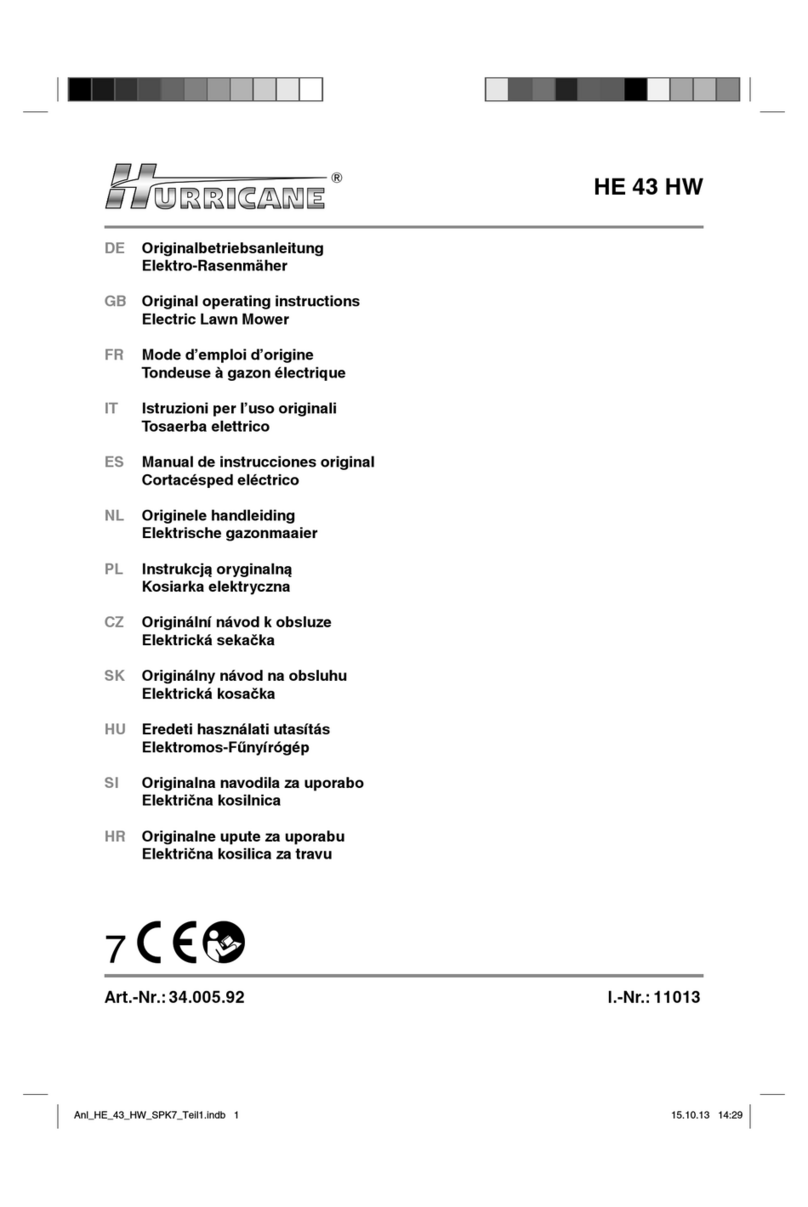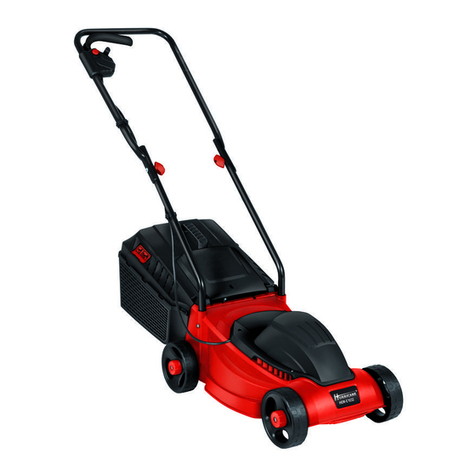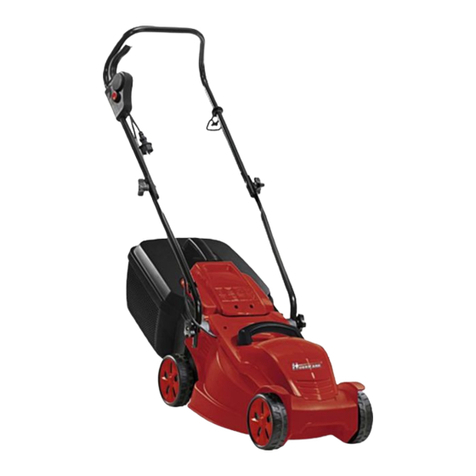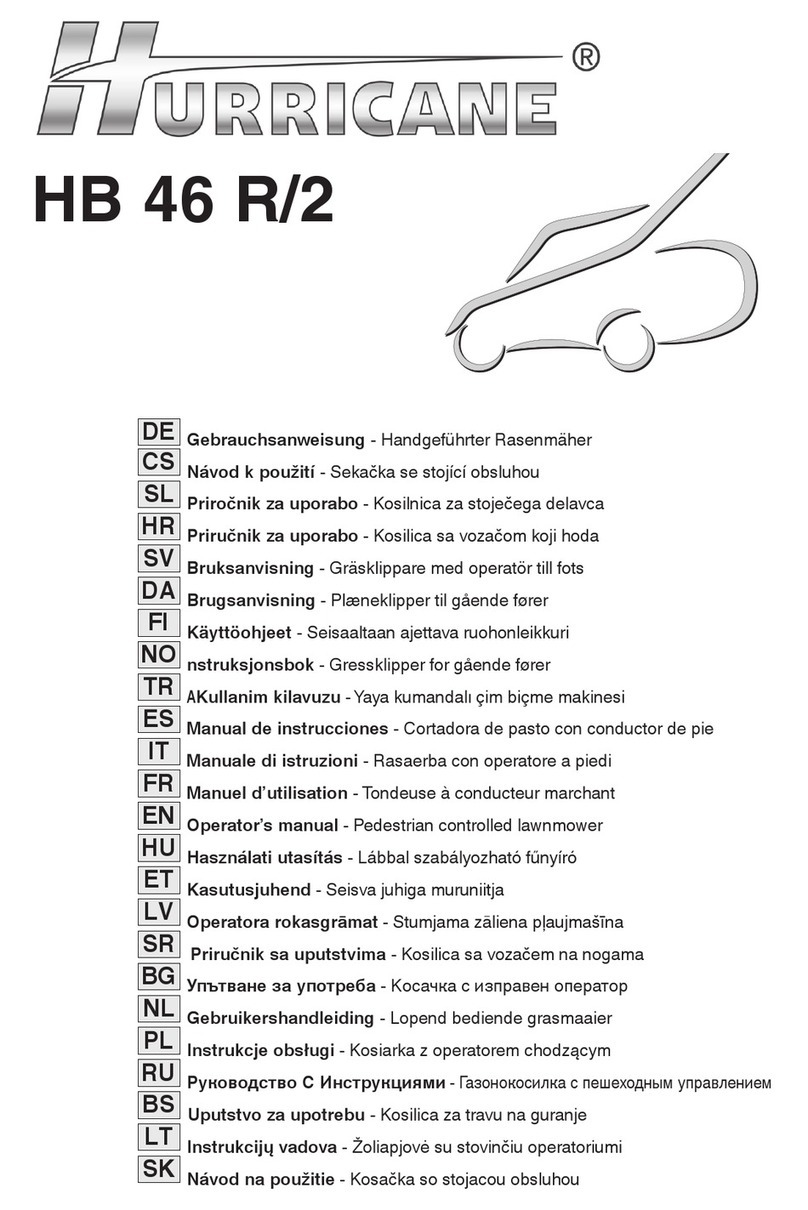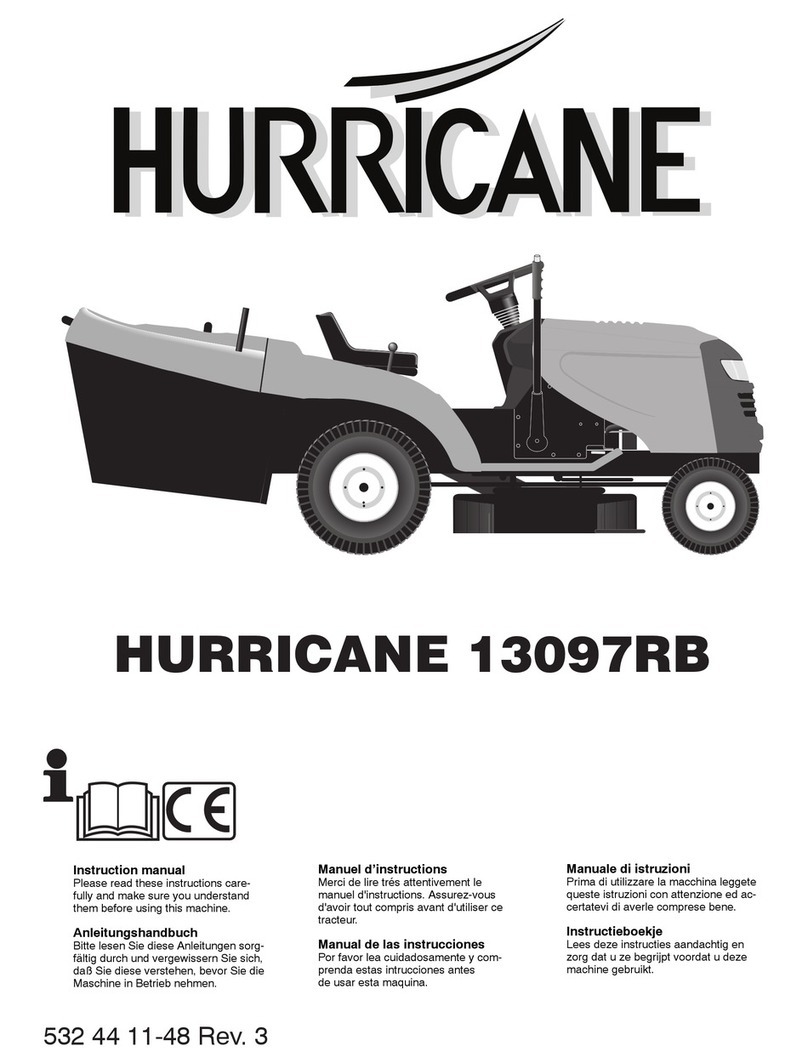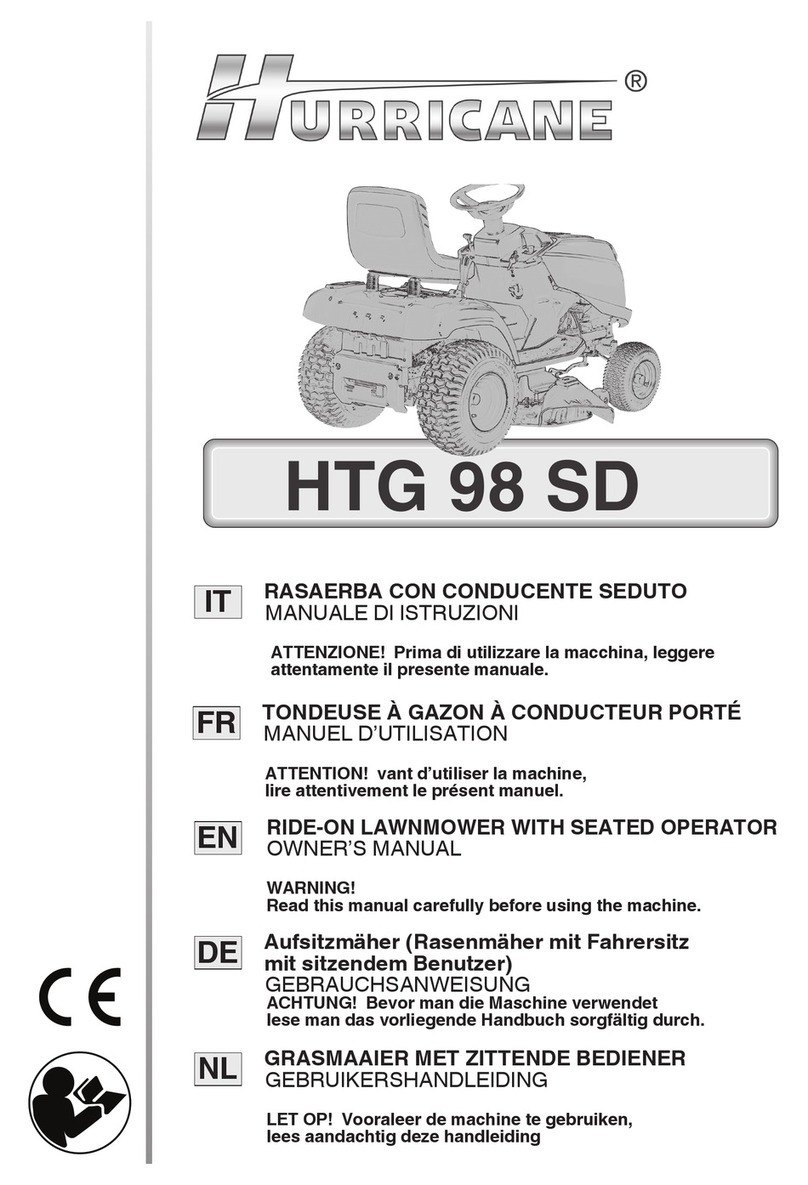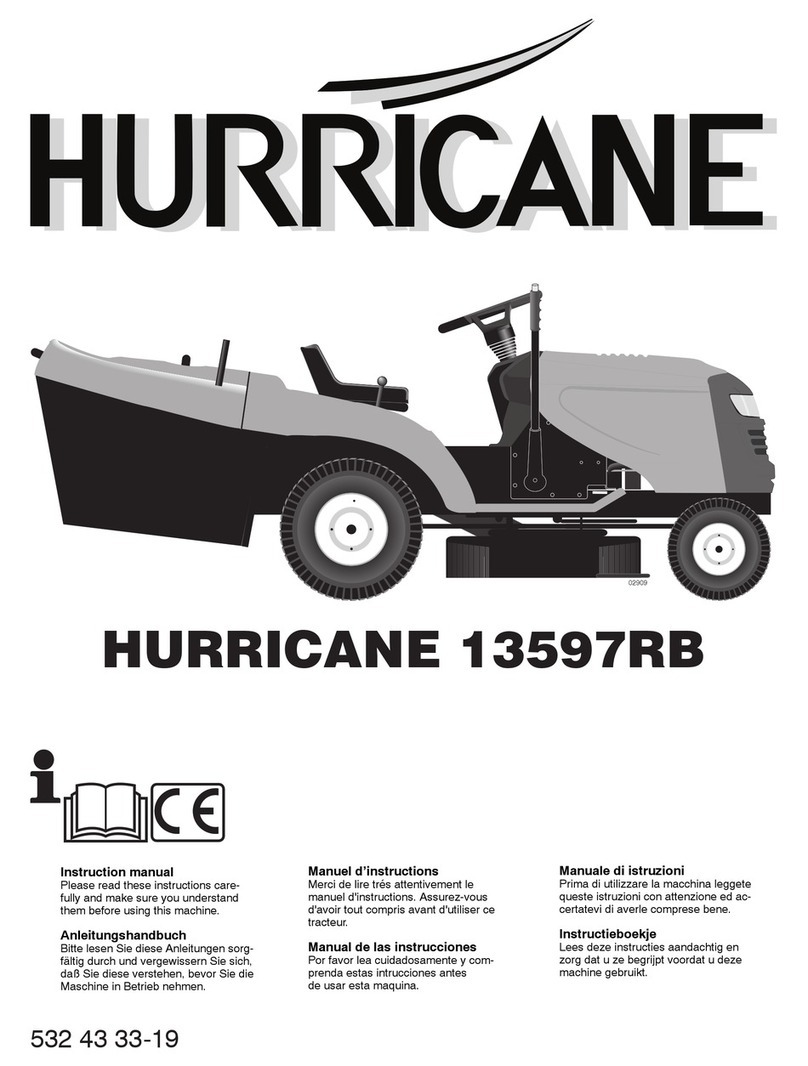
6
●Avoid operating the equipment in wet grass.
●Watch your steps on slopes.
●Walk, never run.
●Mow across slopes, never up and down.
●Exercise extreme caution when changing direction on slopes.
●Do not mow excessively steep slopes.
●Use extreme caution when reversing or pulling the lawn mower towards you.
●Stop the blade if the lawn mower has to be tilted for transportation when crossing surfaces other than
grass, and when transporting the lawn mower to and from the area to be mown.
●Never operate the lawn mower with defective guards, e.g. deflectors and/or grass catchers.
●Caution: The lawnmower must not be operated without either the grass catcher or self-closing
discharge opening guard in place.
●Do not change the speed governor of the engine.
●The lawnmower safety systems or features shall not be tampered with or disabled.
●Disengage all and drive clutches before starting the engine.
●Start the engine carefully according to instructions and with feet well away from the blade.
●Do not tilt the lawn mower when starting the engine.
●Do not start the engine when standing in front of the discharge chute.
●Do not put hands or feet near or under rotating parts. Keep clear of the discharge opening at all times.
●Never pick up or carry a lawn mower while the engine is running.
●Stop the engine and disconnect the spark plug wire, make sure that all moving parts have come to a
complete stop and, where a key is fitted, remove the key
- before clearing blockages or unclogging the discharge chute;
- before checking, cleaning or working on the lawn mower;
- after having hit a foreign object. Inspect the lawnmower for damage and make repairs before
restarting and operating the lawn mower.
- If the lawn mower starts to vibrate abnormally (immediate check necessary);
- before refueling.
Maintenance and storage
●Keep all nuts, bolts and screws tight to ensure a safe working condition.
●Be sure there is adequate ventilation whenever you operate or service the engine.
●Never store the equipment with petrol in the tank inside a building.
●Allow the engine to cool down before storage. Clean and maintain the lawnmower before storage.
●To reduce fire hazard, keep the engine, silencer and petrol tank area free of grass, leaves or resin.
●Regularly check the grass catcher for wear or deterioration.
●Replace worn or damaged parts.
●If the fuel tank has to be drained, do so only outdoors.Allow it to cool down for at least 15 minutes first.
●Improper maintenance, use of non-conform replacement components, or the removal or modification of
safety components can damage the lawnmower and lead to serious injuries or death.
●Only use the blades and spare parts recommended by the manufacturer. The use of counterfeit parts
can damage the machine and injure the operators. Keep the lawnmower in good working condition.
●If the blade doesn’t immediately stop on stopping the engine, please contact the service center.
DANGER: Do not touch the rotating blade.
WARNING: Refuel in a well ventilated area with the engine stopped.
